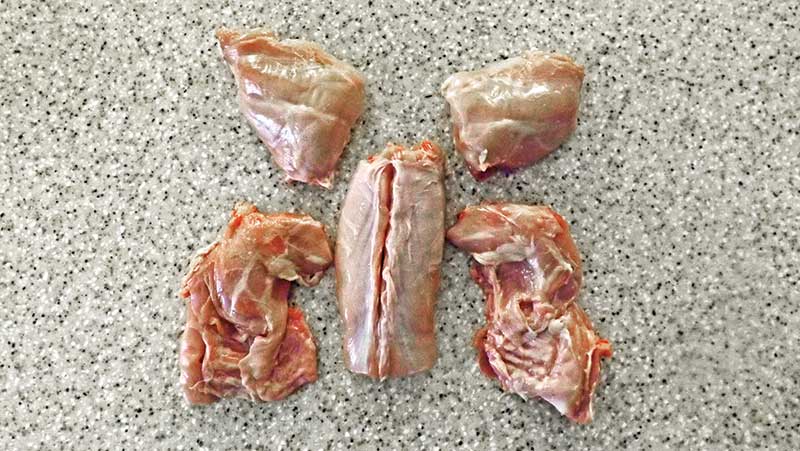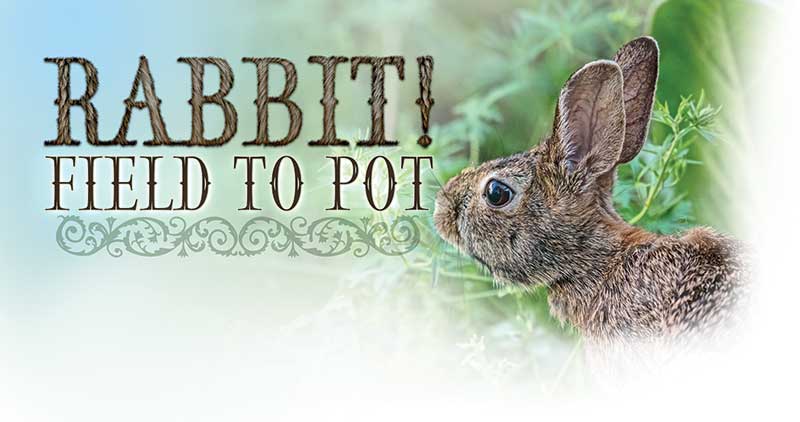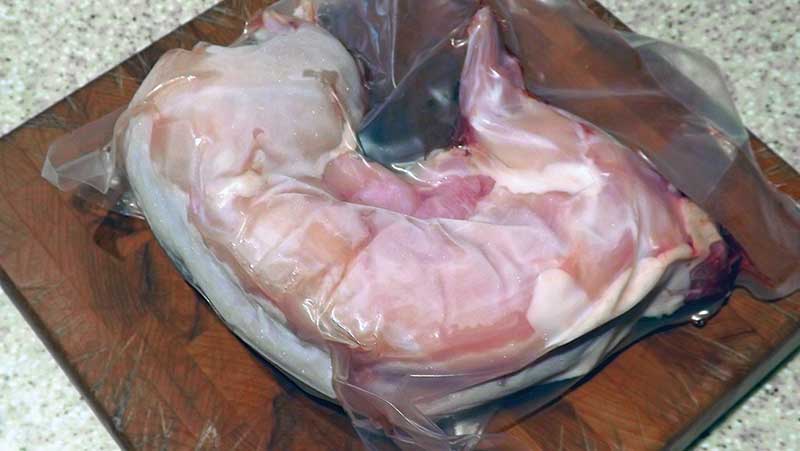Rabbit! Field to Pot
Surviving on the Whole-Earth Game Animal
Rabbits are the whole-earth game animal. They’re no. 1 in North America, leading the tree squirrel, and are found worldwide as well. Where not indigenous, many species have been introduced for various reasons, including meat and fur.
Can man survive on a rabbit-only diet? Some say not, pointing to “rabbit starvation” aka “protein poisoning.” Controversy exists. One expert claimed eating “the seven food groups” was the only road to vitality. He must not have heard about the Maasai, who consume no vegetables and no meat, living entirely on cattle milk and blood.
Rabbit is high in protein and low in the various fat groups. Consumed with other foods it’s a highly valuable meat source, easy to hunt and a cinch to field dress, butcher and cook. Seasons are generous, with legal “means of taking” ranging from pellet gun (not BB!) to shotgun. There are also dedicated rabbit hunters who enjoy the chase with dogs. Most of us will still-hunt, strategically covering habitat on foot. My personal favorite — winter hunts in snow where following a “rabbit run” leads to old homesteads, collections of scrap, plus natural thickets and cover.

Methods of take can vary to about anything you have at-hand. A .410 like the double Stoeger,
simple .22 like the Stevens, an air rifle (shown above is an Airforce .22 and a vintage
Benjamin .20 cal. pump) and even a child’s bow (shown with a short range “flu-flu” arrow)
would all work just fine. Butchering tools needed are few. A stout knife is handy to cut legs
and such, and a smaller knife (even a pocket knife) can get the field cleaning chores
done in no time. Game shears are also useful.
Hardware
While a .22 rifle is top-of-the-list, my most enjoyable hunts are with a .32-caliber flintlock. A friend from “back east” was visiting my Wyoming home. Big game season was passed, but cottontails were open. I loaned Bob a scoped .22 while I packed the flintlock. My companion chided I’d get more misfires than rabbits. Our self-imposed limit was five each, plenty for a few suppers.
The flintlock fired five times consecutively following the simple method of using a touchhole pick to block the vent, securing the powder charge firmly into the breech, followed by careful removal of the blocked flash hole passage. This ensures a “jump” from powder flash to main charge, whereas a touchhole vent loaded with packed powder is a “fuse.” Do not overfill the pan. Try to keep powder about two-thirds to the outside away from the touchhole entrance.
My rabbits are unsophisticated. Shots at 20 to 25 yards are common, often closer. Rock piles in mountain country make good rabbit cover. Binoculars reveal sedentary rabbits sitting close to escape routes into the boulders. Stalking is the wrong word. Quiet walking in plain sight is the rule. Take careful aim. Squeeze the trigger. Collect your prize after the perfect meat-saving headshot.
Or work the brush with a shotgun. If you are as good as one of my teachers, Mr. Mullins the Louisiana Man, then go with your rifle. He had a single-shot Remington Rolling Block .22 (short only, no need for long rifles). Aim. Pop! Another cottontail for the pot. I never got that good.

Once broken down into the bits (above), you have five healthy, protein-rich pieces. Think “chicken” in
texture and flavor, and it works great stewed, fried, in a crock-pot, stir-fried or anything you can dream up.
Truly a do-anything food, always close at hand. Tidily wrapped in a vacuum bag (below), rabbit can sit
in the freezer for up to a year to supply needed protein.
Prepping
Skinnin’ a rabbit is simple. Don plastic gloves to keep hands clean and go to work. The coat is worn loose. Pull the stomach fur out, slice with small knife, strip hide up over head and down over tail. Off comes the pelt by cutting head and back legs off. A slit is made from anal canal through sternum. Evacuate the entrails. Centrifugal force works fine. Hang on firmly to the hind legs and whirl the opened-up rabbit swiftly. Scrape out the cavity. You’re done.
You have in your hand a parcel of prime meat ready for cooling. If snow is handy, rub carcass clean with the white stuff and secure cooled meat in game bag. Do not leave it in the snow to collect later. If magpies are in the area, they will discover your cache and devour as much as possible, starting with the tenderloins. I haven’t seen it, but I bet crows and ravens will also partake.
Secured in plastic bags, the field-dressed rabbits come home. Plop into cold saltwater with a little white vinegar, leaving as long as overnight in a cool spot. Vigorously rub dry with cloth towel. This step removes any clinging tissue. It’s so easy. Place the rabbit on a secure surface, such as a chopping block, and with heavy knife or cleaver, lop off bony lower leg parts. Section front and back legs where each meets back. Run a sharp knife tip right down the center of the backbone. Lift the flaps of skin on either side of the backbone and discard. This is the tough stuff.
Divide back legs. Split sternum to separate front legs. If the tailbone was not discarded in the field, slice it away from the back legs. Lying on the block are five pieces. Two front legs with rib cage attached. Two rear legs attached. One back. Ribs may be cut away with game shears. Wrap well for freezing, in plastic and then freezer paper, marked with date. Vacuum sealing is also fine. While a deep freeze should hold the meat for as long as a year, consume within six months.
A friend and I have a partnership. He does not hunt. I provide the rabbits. He does the barbeque. His grandfather taught him “pot boiling,” which his grandpa in turn learned from his grandfather who lived on a Southern plantation. We term it parboiling, which tenderizes the meat. My electric pressure cooker does the job in 15 minutes. Now the pieces are ready for grill or fry pan. To strip the meat entirely off of the bone for hasenpfeffer and stews, parboil or pressure cook longer. Recipes abound. One I have never tried is “Crispy Rabbit Ears.” Maybe someday.
More Cooking Tips
A sure-to-please method is slow-frying tenderized meat in 50/50 canola oil and butter. Sprinkle a little Goya Adobe All Purpose Seasoning and Lawry’s Seasoning Salt on the raw meat. While cooking, add a little splash of Jugo, or Dales Steak Seasoning, or soy sauce (these are optional). When just about cooked add chicken broth with bouillon cubes and simmer away. Serve tender pieces over white rice. Experiment until you find your personal recipe.
The whole-earth game animal is a powerful addition to the hunter’s menu. Abundant, easy to bag and field dress, it’s a basic meat that can be secured without much expense, along with a lot of outdoor enjoyment. Also much easier to pack out than deer, elk or moose!
I have had house guests turn down delicious sherry wine rabbit stew, not wanting to eat Peter Cottontail. It’s not nice to trick either Mother Nature or supper guests, but attach a pretty name to your recipe — something French — and your family and guests will love it. I’m not keen on snails, but escargot ain’t bad.
And now, excuse me. Breakfast time. I’m having chicken embryos and hog fat.







